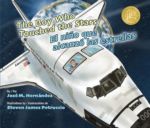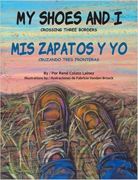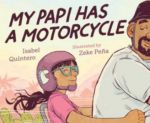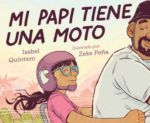
Sixteen-year-old Biz sees her father every day, though he died when she was seven. When he suddenly disappears, she tumbles into a disaster-land of grief and depression from which she must find her way back.
Materials from United States of America

Sixteen-year-old Biz sees her father every day, though he died when she was seven. When he suddenly disappears, she tumbles into a disaster-land of grief and depression from which she must find her way back.

Sixteen year old Nalah leads the fiercest all-girl crew in Mega City, but when she sets her sights on giving this life up for a prestigious home in Mega Towers, she must decide if she’s willing to do the unspeakable to get what she wants.

Every night when he was a boy, José M. Hernández would look out the window and stare at the stars. They were different colors: blue, yellow and white. Some were larger and brighter than others, and some twinkled as if they were alive. Later, when he saw man land on the moon on TV, he knew he wanted to be an astronaut.

As a boy and his Papa travel from El Salvador to the United States to be reunited with Mama, his wonderful new shoes help to distract him from the long and difficult journey.

When Daisy Ramona zooms around her neighborhood with her papi on his motorcycle, she sees the people and places she’s always known. She also sees a community that is rapidly changing around her.
Featured in Volume XIII, Issue 2 of WOW Review.

The Middle Grade Memoir of a Girl Boxer and Future Olympian. In this Lean-In style inspirational memoir, twelve-year-old Jesselyn Silva offers a ringside seat to girl power and what it takes to win in the ring and in life: punch by punch. Girl Boxer shows kids what it means to be true to yourself and stick with your dreams even when facing adversity and ridicule. Supported by her single dad, Jesselyn (JessZilla in the ring) first donned her boxing gloves at five years of age, making her one of very few female boxers in the country. Girl Boxer charts Jesselyn’s oft times exhilarating and heartbreaking journey to success in a male dominated sport where she struggles to find partners to spar with and combats the viewpoint that no one wants to see a girl fight. Despite an inhospitable environment, Jesselyn still has her sights set on the Olympics. With the help of her very dad, Pedro, who has instilled in her a strong work ethic, she just might make it. It is an exciting and motivational read that will provide kids with the roadmap and encouragement to accomplish whatever goals they set for themselves. Jesselyn’s positive can-do attitude and determination make this a must read.

After a bad school day, Sofi is transported from a New York City community garden to the Dominican Republic and Haiti, and helps composer Juan Luis and artist Guerlande.

A Navajo family welcomes a new baby into the family with love and ceremony, eagerly waiting for that first special laugh. Includes brief description of birth customs in different cultures.

Cuando Daisy Ramona recorre su barrio en motocicleta con su papi, ve a la gente y los lugares que siempre ha conocido. También ve a una comunidad que está cambiando rápidamente a su alrededor. Pero mientras el sol azul púrpura y dorado se va poniendo a sus espaldas, Daisy Ramona comprende que el amor que siente por su ciudad nunca cambiará. Con brillantes ilustraciones y un texto lleno de sentimiento, Mi papi tiene una motocicleta es un mensaje lleno de amor de una niña a su padre, esforzado trabajador, y a los recuerdos que todos guardamos de nuestro hogar a pesar de los cambios o la distancia.

Armed with pencils, paints, dreams, and Grandma Addy’s memories of how beautiful the neighborhood once was, a boy and his neighbors paint the big wall that had been cold, empty, and cheerless.